COMPUTER NETWORKS
FOURTH EDITION
PROBLEM SOLUTIONS
ANDREW S. TANENBAUM
Vrije Universiteit
Amsterdam, The Netherlands
PRENTICE HALL PTR
UPPER SADDLE RIVER, NJ 07458
�
© 2003 Pearson Education, Inc.
Publishing as Prentice Hall PTR
Upper Saddle River, New Jersey 07458
All rights reserved. No part of this book may be reproduced, in any form or by any means,
without permission in writing from the publisher.
Printed in the United States of America
10 9 8 7 6 5 4 3 2 1
ISBN 0-13-046002-8
Pearson Education LTD.
Pearson Education Australia PTY, Limited
Pearson Education Singapore, Pte. Ltd.
Pearson Education North Asia Ltd.
Pearson Education Canada, Ltd.
Pearson Educación de Mexico, S.A. de C.V.
Pearson Education — Japan
Pearson Education Malaysia, Pte. Ltd.
�
PROBLEM SOLUTIONS
1
SOLUTIONS TO CHAPTER 1 PROBLEMS
1. The dog can carry 21 gigabytes, or 168 gigabits. A speed of 18 km/hour
equals 0.005 km/sec. The time to travel distance x km is x /0.005 = 200x sec,
yielding a data rate of 168/200x Gbps or 840/x Mbps. For x < 5.6 km, the
dog has a higher rate than the communication line.
2. The LAN model can be grown incrementally. If the LAN is just a long cable.
it cannot be brought down by a single failure (if the servers are replicated) It
is probably cheaper. It provides more computing power and better interactive
interfaces.
3. A transcontinental fiber link might have many gigabits/sec of bandwidth, but
the latency will also be high due to the speed of light propagation over
thousands of kilometers. In contrast, a 56-kbps modem calling a computer in
the same building has low bandwidth and low latency.
4. A uniform delivery time is needed for voice, so the amount of jitter in the net-
work is important. This could be expressed as the standard deviation of the
delivery time. Having short delay but large variability is actually worse than
a somewhat longer delay and low variability.
5. No. The speed of propagation is 200,000 km/sec or 200 meters/µsec. In 10
µsec the signal travels 2 km. Thus, each switch adds the equivalent of 2 km
of extra cable. If the client and server are separated by 5000 km, traversing
even 50 switches adds only 100 km to the total path, which is only 2%. Thus,
switching delay is not a major factor under these circumstances.
6. The request has to go up and down, and the response has to go up and down.
The total path length traversed is thus 160,000 km. The speed of light in air
and vacuum is 300,000 km/sec,
so the propagation delay alone is
160,000/300,000 sec or about 533 msec.
7. There is obviously no single correct answer here, but the following points
seem relevant. The present system has a great deal of inertia (checks and bal-
ances) built into it. This inertia may serve to keep the legal, economic, and
social systems from being turned upside down every time a different party
comes to power. Also, many people hold strong opinions on controversial
social issues, without really knowing the facts of the matter. Allowing poorly
reasoned opinions be to written into law may be undesirable. The potential
effects of advertising campaigns by special interest groups of one kind or
another also have to be considered. Another major issue is security. A lot of
people might worry about some 14-year kid hacking the system and falsifying
the results.
�
2
PROBLEM SOLUTIONS FOR CHAPTER 1
8. Call the routers A, B, C, D, and E. There are ten potential lines: AB, AC,
AD, AE, BC, BD, BE, CD, CE, and DE. Each of these has four possibilities
(three speeds or no line), so the total number of topologies is 410 = 1,048,576.
At 100 ms each, it takes 104,857.6 sec, or slightly more than 29 hours to
inspect them all.
9. The mean router-router path is twice the mean router-root path. Number the
levels of the tree with the root as 1 and the deepest level as n. The path from
the root to level n requires n − 1 hops, and 0.50 of the routers are at this level.
The path from the root to level n − 1 has 0.25 of the routers and a length of
n − 2 hops. Hence, the mean path length, l, is given by
l = 0.5 × (n − 1) + 0.25 × (n − 2) + 0.125 × (n − 3) + . . .
or
l =
Σ∞
i =1
n (0.5)i −
Σ∞
i =1
i(0.5)i
This expression reduces to l = n − 2. The mean router-router path is thus
2n − 4.
10. Distinguish n + 2 events. Events 1 through n consist of the corresponding
host successfully attempting to use the channel, i.e., without a collision. The
probability of each of these events is p(1 − p)n − 1. Event n + 1 is an idle
channel, with probability (1 − p)n. Event n + 2 is a collision. Since these
n + 2 events are exhaustive, their probabilities must sum to unity. The proba-
bility of a collision, which is equal to the fraction of slots wasted, is then just
1 − np(1 − p)n − 1 − (1 − p)n.
11. Among other reasons for using layered protocols, using them leads to break-
ing up the design problem into smaller, more manageable pieces, and layering
means that protocols can be changed without affecting higher or lower ones,
12. No. In the ISO protocol model, physical communication takes place only in
the lowest layer, not in every layer.
13. Connection-oriented communication has three phases.
In the establishment
phase a request is made to set up a connection. Only after this phase has been
successfully completed can the data transfer phase be started and data trans-
ported. Then comes the release phase. Connectionless communication does
not have these phases. It just sends the data.
14. Message and byte streams are different.
In a message stream, the network
keeps track of message boundaries. In a byte stream, it does not. For exam-
ple, suppose a process writes 1024 bytes to a connection and then a little later
writes another 1024 bytes. The receiver then does a read for 2048 bytes.
With a message stream, the receiver will get two messages, of 1024 bytes
�
PROBLEM SOLUTIONS FOR CHAPTER 1
3
each. With a byte stream, the message boundaries do not count and the
receiver will get the full 2048 bytes as a single unit. The fact that there were
originally two distinct messages is lost.
15. Negotiation has to do with getting both sides to agree on some parameters or
values to be used during the communication. Maximum packet size is one
example, but there are many others.
16. The service shown is the service offered by layer k to layer k + 1. Another
service that must be present is below layer k, namely, the service offered to
layer k by the underlying layer k − 1.
17. The probability, Pk, of a frame requiring exactly k transmissions is the proba-
bility of the first k − 1 attempts failing, p k − 1, times the probability of the k-th
transmission succeeding, (1 − p). The mean number of transmission is then
just
Σ∞
k =1
kPk =
k(1 − p)p k − 1 =
Σ∞
k =1
133333
1 − p
18. (a) Data link layer. (b) Network layer.
19. Frames encapsulate packets. When a packet arrives at the data link layer, the
entire thing, header, data, and all, is used as the data field of a frame. The
entire packet is put in an envelope (the frame), so to speak (assuming it fits).
20. With n layers and h bytes added per layer, the total number of header bytes
per message is hn, so the space wasted on headers is hn. The total message
size is M + nh, so the fraction of bandwidth wasted on headers
is
hn /(M + hn).
21. Both models are based on layered protocols. Both have a network, transport,
and application layer.
In both models, the transport service can provide a
reliable end-to-end byte stream. On the other hand, they differ in several
ways. The number of layers is different, the TCP/IP does not have session or
presentation layers, OSI does not support internetworking, and OSI has both
connection-oriented and connectionless service in the network layer.
22. TCP is connection oriented, whereas UDP is a connectionless service.
23. The two nodes in the upper-right corner can be disconnected from the rest by
three bombs knocking out the three nodes to which they are connected. The
system can withstand the loss of any two nodes.
24. Doubling every 18 months means a factor of four gain in 3 years. In 9 years,
the gain is then 43 or 64, leading to 6.4 billion hosts. My intuition says that is
much too conservative, since by then probably every television in the world
and possibly billions of other appliances will be on home LANs connected to
�
4
PROBLEM SOLUTIONS FOR CHAPTER 1
the Internet. The average person in the developed world may have dozens of
Internet hosts by then.
25. If the network tends to lose packets, it is better to acknowledge each one
separately, so the lost packets can be retransmitted. On the other hand, if the
network is highly reliable, sending one acknowledgement at the end of the
entire transfer saves bandwidth in the normal case (but requires the entire file
to be retransmitted if even a single packet is lost).
26. Small, fixed-length cells can be routed through switches quickly, and com-
pletely in hardware. Small, fixed-size cells also make it easier to build
hardware that handles many cells in parallel. Also,
they do not block
transmission lines for very long, making it easier to provide quality-of-service
guarantees.
27. The speed of light in coax is about 200,000 km/sec, which is 200 meters/µsec.
At 10 Mbps, it takes 0.1 µsec to transmit a bit. Thus, the bit lasts 0.1 µsec in
time, during which it propagates 20 meters. Thus, a bit is 20 meters long
here.
28. The image is 1024 × 768 × 3 bytes or 2,359,296 bytes. This is 18,874,368
bits. At 56,000 bits/sec, it takes about 337.042 sec. At 1,000,000 bits/sec, it
takes about 18.874 sec. At 10,000,000 bits/sec, it takes about 1.887 sec. At
100,000,000 bits/sec, it takes about 0.189 sec.
29. Think about the hidden terminal problem. Imagine a wireless network of five
stations, A through E, such that each one is in range of only its immediate
neighbors. Then A can talk to B at the same time D is talking to E. Wireless
networks have potential parallelism, and in this way differ from Ethernet.
30. One disadvantage is security. Every random delivery man who happens to be
in the building can listen in on the network. Another disadvantage is reliabil-
ity. Wireless networks make lots of errors. A third potential problem is bat-
tery life, since most wireless devices tend to be mobile.
31. One advantage is that if everyone uses the standard, everyone can talk to
everyone. Another advantage is that widespread use of any standard will give
it economies of scale, as with VLSI chips. A disadvantage is that the political
compromises necessary to achieve standardization frequently lead to poor
standards. Another disadvantage is that once a standard has been widely
adopted, it is difficult
to change,, even if new and better techniques or
methods are discovered. Also, by the time it has been accepted, it may be
obsolete.
32. There are many examples, of course. Some systems for which there is inter-
national standardization include compact disc players and their discs, Walk-
man tape players and audio cassettes, cameras and 35mm film, and automated
�
PROBLEM SOLUTIONS FOR CHAPTER 1
5
teller machines and bank cards. Areas where such international standardiza-
tion is lacking include VCRs and videotapes (NTSC VHS in the U.S., PAL
VHS in parts of Europe, SECAM VHS in other countries), portable tele-
phones, lamps and lightbulbs (different voltages in different countries), electr-
ical sockets and appliance plugs (every country does it differently), photo-
copiers and paper (8.5 x 11 inches in the U.S., A4 everywhere else), nuts and
bolts (English versus metric pitch), etc.
SOLUTIONS TO CHAPTER 2 PROBLEMS
1. an =
−1333, bn = 0, c = 1.
πn
2. A noiseless channel can carry an arbitrarily large amount of information, no
matter how often it is sampled. Just send a lot of data per sample. For the 4
kHz channel, make 8000 samples/sec. If each sample is 16 bits, the channel
can send 128 kbps.
If each sample is 1024 bits, the channel can send 8.2
Mbps. The key word here is ‘‘noiseless.’’ With a normal 4 kHz channel, the
Shannon limit would not allow this.
3. Using the Nyquist theorem, we can sample 12 million times/sec. Four-level
signals provide 2 bits per sample, for a total data rate of 24 Mbps.
4. A signal-to-noise ratio of 20 dB means S/N = 100. Since log2101 is about
6.658, the Shannon limit is about 19.975 kbps. The Nyquist limit is 6 kbps.
The bottleneck is therefore the Nyquist limit, giving a maximum channel
capacity of 6 kbps.
5. To send a T1 signal we need Hlog2(1 + S /N) = 1.544 × 106 with H = 50,000.
This yields S /N = 230 − 1, which is about 93 dB.
6. A passive star has no electronics. The light from one fiber illuminates a
number of others. An active repeater converts the optical signal to an electri-
cal one for further processing.
7. Use ∆ f = c∆λ/λ2 with ∆λ = 10−7 meters and λ = 10−6 meters. This gives a
bandwidth (∆f) of 30,000 GHz.
8. The data rate is 480 × 640 × 24 × 60 bps, which is 442 Mbps. For simplicity,
let us assume 1 bps per Hz. From Eq. (2-3) we get ∆λ = λ2∆f /c. We have
∆f = 4.42 × 108, so ∆λ = 2.5 × 10−6 microns. The range of wavelengths used
is very short.
9. The Nyquist theorem is a property of mathematics and has nothing to do with
technology. It says that if you have a function whose Fourier spectrum does
not contain any sines or cosines above f, then by sampling the function at a
�
6
PROBLEM SOLUTIONS FOR CHAPTER 2
frequency of 2f you capture all the information there is. Thus, the Nyquist
theorem is true for all media.
10. In the text it was stated that the bandwidths (i.e., the frequency ranges) of the
three bands were approximately equal. From the formula ∆ f = c∆λ/λ2, it is
clear that to get a constant ∆f, the higher the frequency, the larger ∆λ has to
be. The x-axis in the figure is λ, so the higher the frequency, the more ∆λ
you need. In fact, ∆λ is quadratic in λ. The fact that the bands are approxi-
mately equal is an accidental property of the kind of silicon used.
11. Start with λf = c. We know that c is 3 × 108 m/s. For λ = 1 cm, we get 30
GHz. For λ = 5 m, we get 60 MHz. Thus, the band covered is 60 MHz to 30
GHz.
12. At 1 GHz, the waves are 30 cm long. If one wave travels 15 cm more than
the other, they will arrive out of phase. The fact that the link is 50 km long is
irrelevant.
13. If the beam is off by 1 mm at the end, it misses the detector. This amounts to
a triangle with base 100 m and height 0.001 m. The angle is one whose
tangent is thus 0.00001. This angle is about 0.00057 degrees.
14. With 66/6 or 11 satellites per necklace, every 90 minutes 11 satellites pass
overhead. This means there is a transit every 491 seconds. Thus, there will
be a handoff about every 8 minutes and 11 seconds.
15. The satellite moves from being directly overhead toward the southern hor-
izon, with a maximum excursion from the vertical of 2φ. It takes 24 hours to
go from directly overhead to maximum excursion and then back.
16. The number of area codes was 8 × 2 × 10, which is 160. The number of
prefixes was 8 × 8 × 10, or 640. Thus, the number of end offices was limited
to 102,400. This limit is not a problem.
17. With a 10-digit telephone number, there could be 1010 numbers, although
many of the area codes are illegal, such as 000. However, a much tighter
limit is given by the number of end offices. There are 22,000 end offices,
each with a maximum of 10,000 lines. This gives a maximum of 220 million
telephones. There is simply no place to connect more of them. This could
never be achieved in practice because some end offices are not full. An end
office in a small town in Wyoming may not have 10,000 customers near it, so
those lines are wasted.
18. Each telephone makes 0.5 calls/hour at 6 minutes each. Thus, a telephone
occupies a circuit for 3 minutes/hour. Twenty telephones can share a circuit,
although having the load be close to 100% (ρ = 1 in queueing terms) implies
very long wait times). Since 10% of the calls are long distance, it takes 200
telephones to occupy a long-distance circuit full time. The interoffice trunk
�
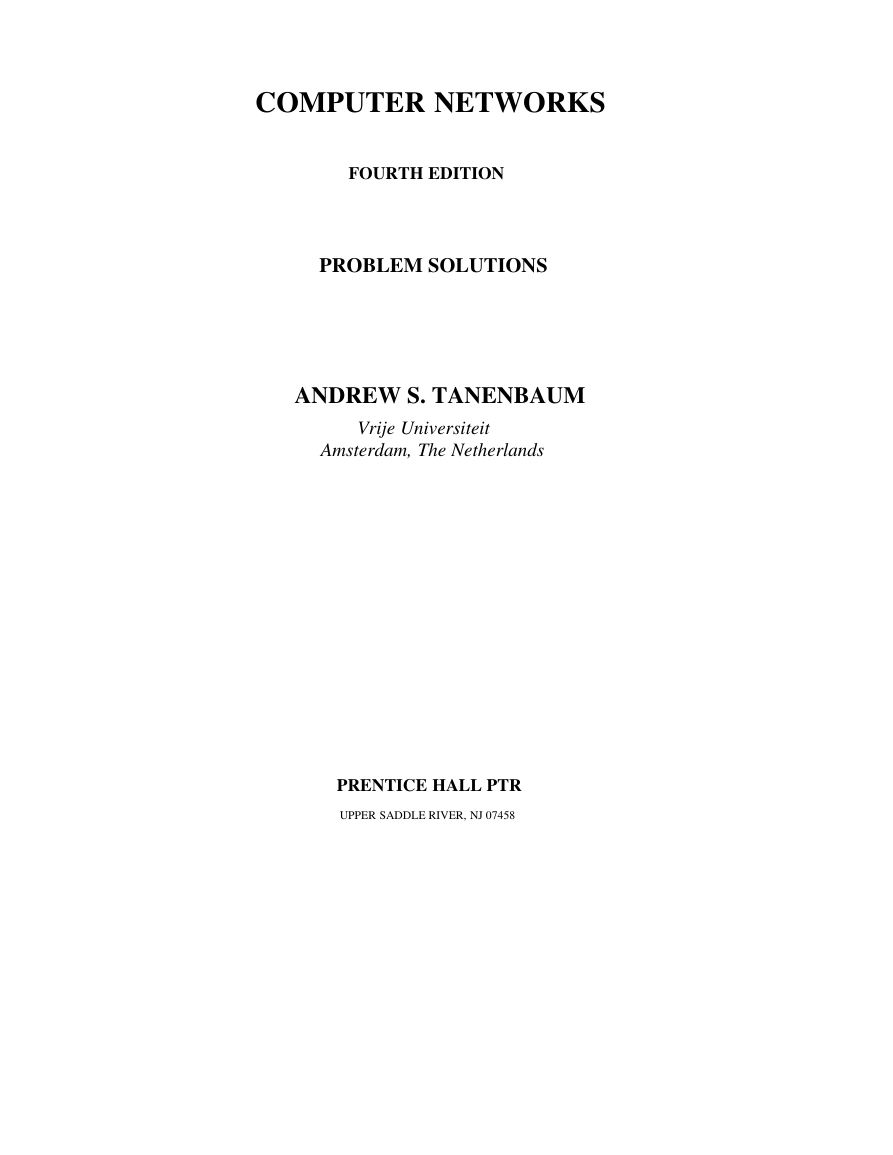
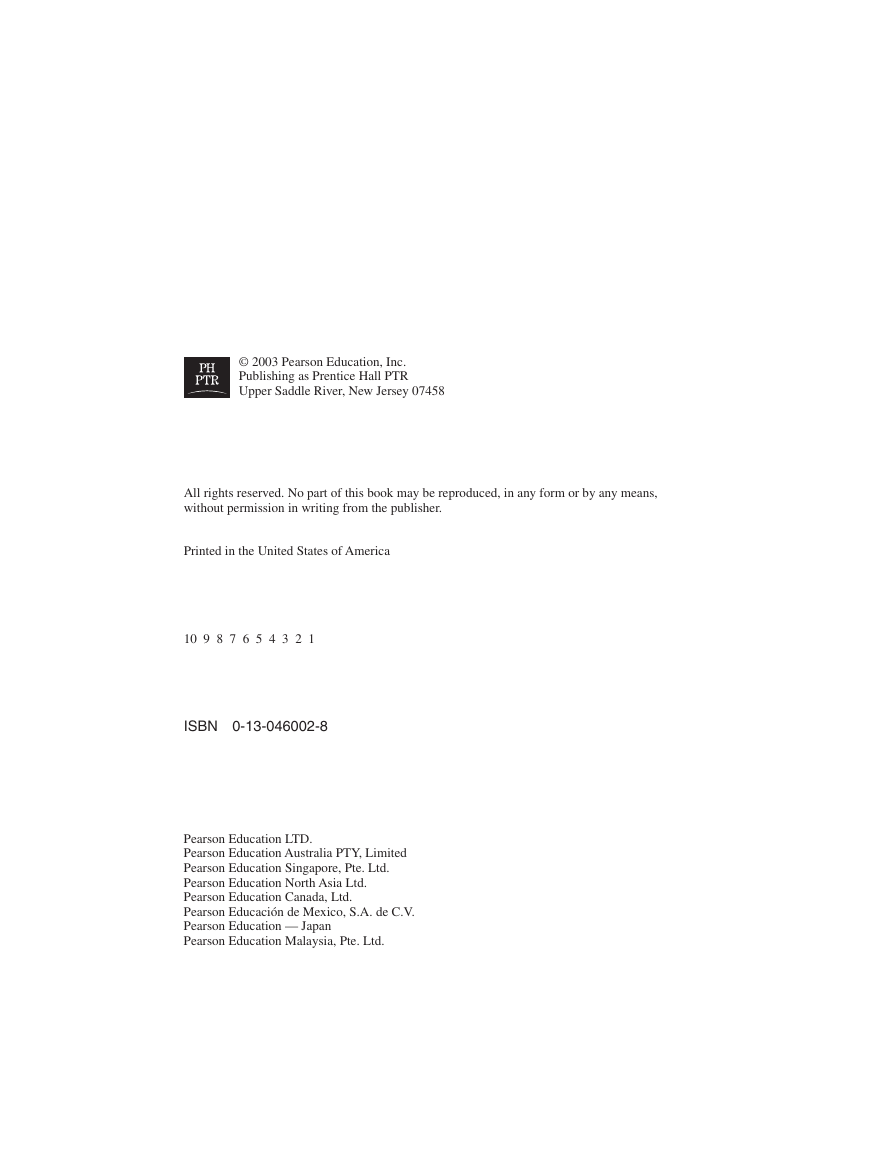
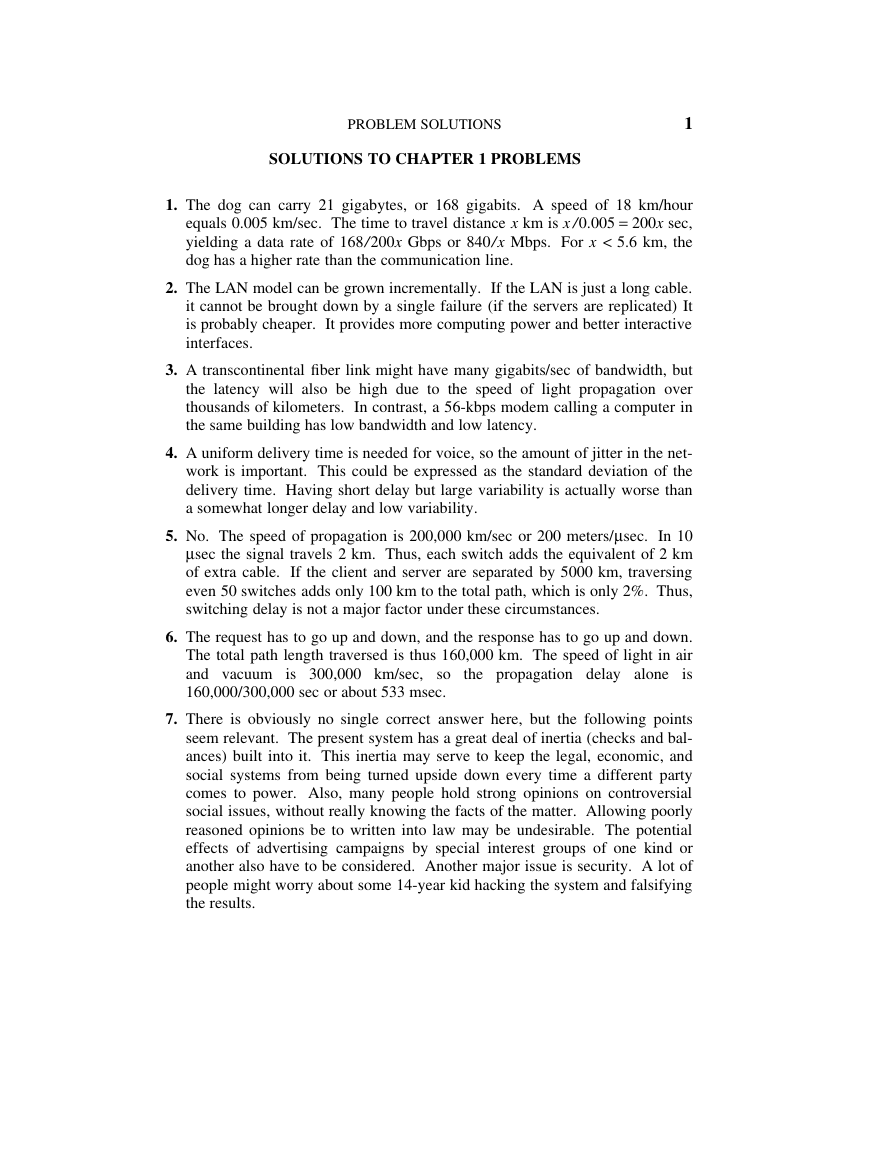
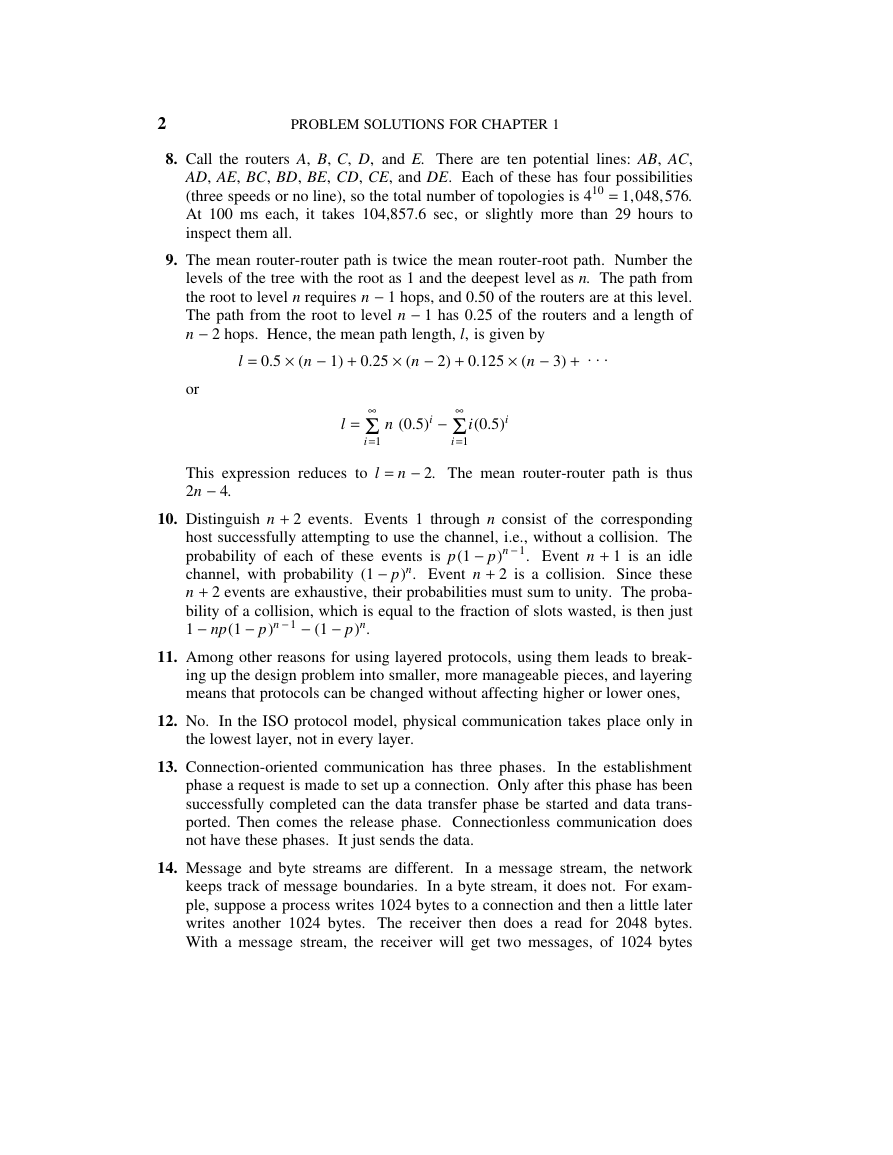
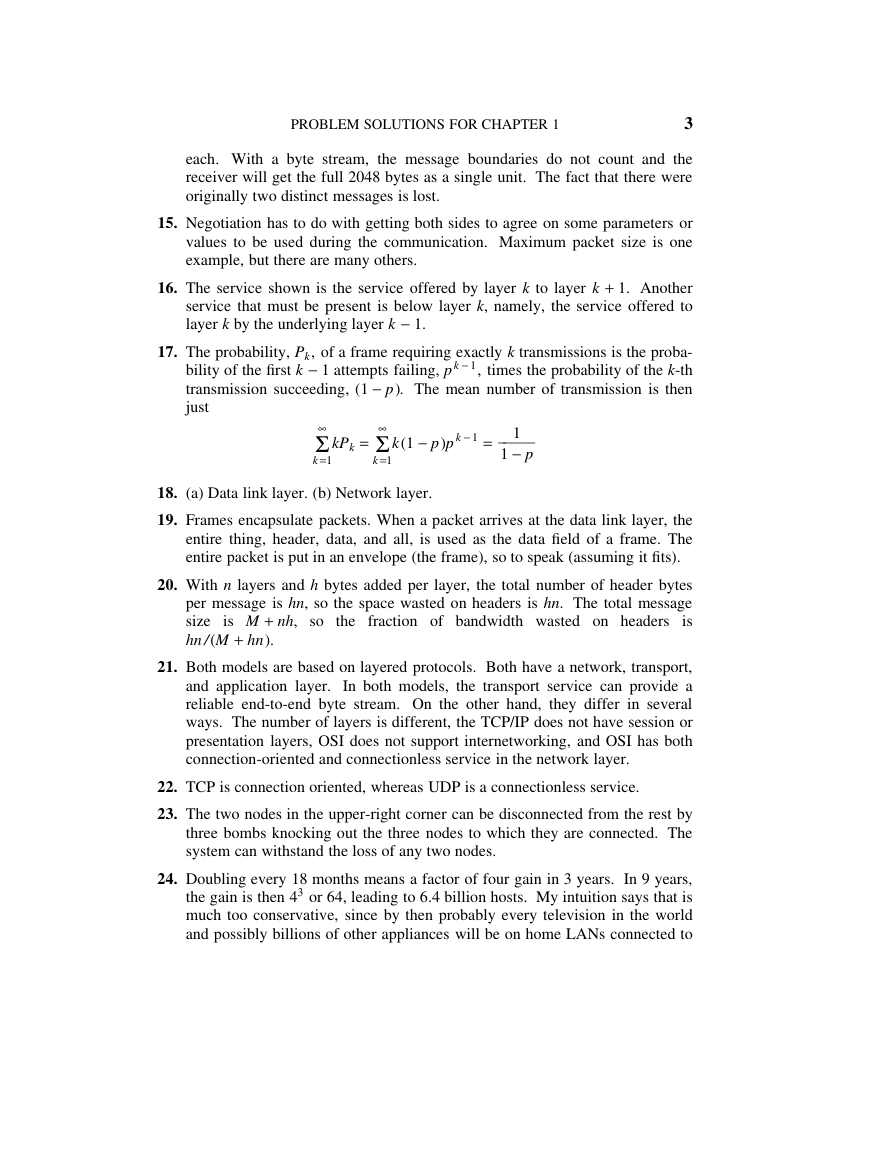


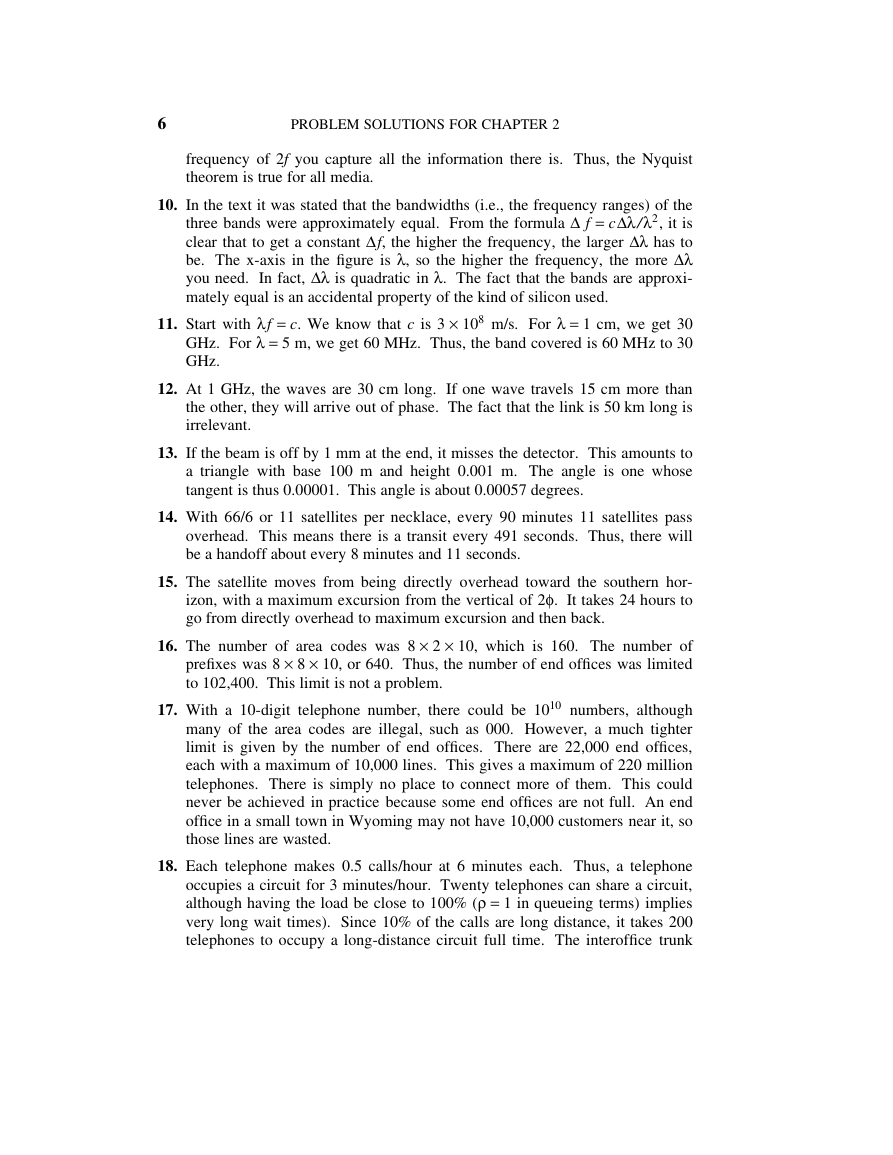








 2023年江西萍乡中考道德与法治真题及答案.doc
2023年江西萍乡中考道德与法治真题及答案.doc 2012年重庆南川中考生物真题及答案.doc
2012年重庆南川中考生物真题及答案.doc 2013年江西师范大学地理学综合及文艺理论基础考研真题.doc
2013年江西师范大学地理学综合及文艺理论基础考研真题.doc 2020年四川甘孜小升初语文真题及答案I卷.doc
2020年四川甘孜小升初语文真题及答案I卷.doc 2020年注册岩土工程师专业基础考试真题及答案.doc
2020年注册岩土工程师专业基础考试真题及答案.doc 2023-2024学年福建省厦门市九年级上学期数学月考试题及答案.doc
2023-2024学年福建省厦门市九年级上学期数学月考试题及答案.doc 2021-2022学年辽宁省沈阳市大东区九年级上学期语文期末试题及答案.doc
2021-2022学年辽宁省沈阳市大东区九年级上学期语文期末试题及答案.doc 2022-2023学年北京东城区初三第一学期物理期末试卷及答案.doc
2022-2023学年北京东城区初三第一学期物理期末试卷及答案.doc 2018上半年江西教师资格初中地理学科知识与教学能力真题及答案.doc
2018上半年江西教师资格初中地理学科知识与教学能力真题及答案.doc 2012年河北国家公务员申论考试真题及答案-省级.doc
2012年河北国家公务员申论考试真题及答案-省级.doc 2020-2021学年江苏省扬州市江都区邵樊片九年级上学期数学第一次质量检测试题及答案.doc
2020-2021学年江苏省扬州市江都区邵樊片九年级上学期数学第一次质量检测试题及答案.doc 2022下半年黑龙江教师资格证中学综合素质真题及答案.doc
2022下半年黑龙江教师资格证中学综合素质真题及答案.doc